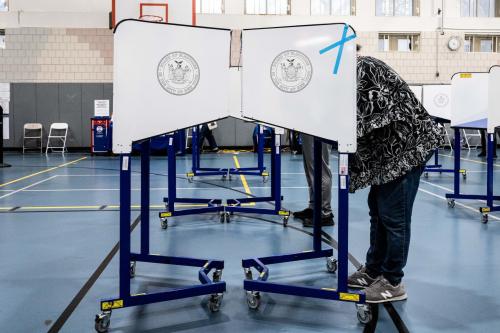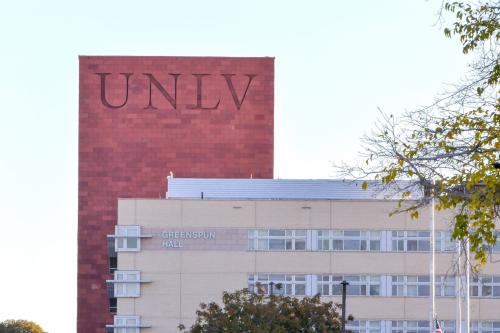In May 2014, former Tennessee Gov. Bill Haslam traveled the state to ceremonially sign Tennessee Promise legislation seven times. The promise, for new high school graduates, was that they could enroll in a postsecondary associate or certificate program without paying for tuition out of pocket. Any balance not covered by federal or state grants would be billed to a new state endowment fund. The idea of “free community college” was a popular one. Five years later, at least 30 other states have active or proposed Promise programs. Each hopes to tackle barriers to college that are rising higher as tuition growth outpaces inflation and earnings. It is too early to say whether these efforts will be successful, but enough time has passed since May 2014 to share five insights from Tennessee Promise.
1. Tennessee Promise was not built from scratch
While Governor Haslam was signing Tennessee Promise bills, tuition-free community college was already available to many high school seniors thanks to two privately funded programs covering 29 counties.
Beginning in 1999, the Ayers Foundation provided grants of up to $4,000 per year to students from rural Decatur and Henderson Counties. Then in 2008, Knox Achieves pledged free community college tuition to any interested high school senior in Knox County. Participants were required to file for financial aid, meet with mentors, volunteer in their community, seamlessly enroll in college, and make satisfactory academic progress. In return, they received “last-dollar” support covering any gap between community college tuition and other sources of financial aid.
My colleague Bill Fox and I found that access to Knox Achieves significantly raised college enrollment, even though about half of participants were eligible for federal Pell Grants that more than covered tuition and fees. By 2014, Knox Achieves had expanded to cover 27 counties under the name tnAchieves.
Tennessee Promise adopted the tnAchieves model, after which both Ayers and tnAchieves shifted from providers to partners, coordinating much of the on-the-ground work of the new statewide program. This continuity helped in implementing Promise just a few months after legislation was signed. Based on the experience of 29 counties who already had an Ayers or tnAchieves presence, problems could be anticipated and minimized in the 66 expansion counties.
2. Tennessee Promise led to increased college enrollment
Despite widespread access to tuition-free college from private programs or Pell, the statewide expansion appears to have had its own distinct effect on college enrollment.
As shown in Figure 1, 60% to 61% of Tennessee’s public high school graduates moved on to college until the class of 2014-15, when the figure jumped to 64% to 65%. This figure’s calculations, from a new policy brief co-authored with Jonathon Attridge of the Tennessee Department of Education, include enrollment in in-state, out-of-state, public, and private institutions.
Figure 2 looks over a longer time horizon, using enrollment data that colleges and systems report to the U.S. Department of Education. The first cohort of students eligible for Tennessee Promise drove the number of new college students to levels not seen since the Great Recession, when for many, college was more accessible than work. Gains in 2015 enrollment were concentrated in two-year community and technical colleges where Tennessee Promise could be used, while enrollment in four-year colleges and universities dipped down by 3.8%.
3. Free community college might complement K-12 career and technical education
Attridge and I broke out overall college going by a student’s status as a career and technical education (CTE) concentrator (see Figure 3 below). While the gap in college enrollment between CTE concentrators and other students was narrowing prior to Tennessee Promise, it completely closed with the class of 2015. It makes sense that CTE students would be particularly interested in Tennessee Promise, since many two-year postsecondary programs pick up where K-12 CTE leaves off.
4. Tennessee Promise has a counterpart for older students
At the same time Promise was launched, Tennessee Reconnect was introduced to pay technical college tuition for students who were 25 and older, and later, for nontraditional students in community colleges as well.
In another forthcoming policy brief, co-author Jill Welch and I focus on the first two cohorts of students eligible to use either Reconnect or Promise at Tennessee Colleges of Applied Technology (TCATs), which are public non-degree institutions that offer a variety of jobs-focused certificate and diploma programs. We find that Reconnect students tend to have very low income, so much so that three in four are eligible for need-based Pell Grants. If not Pell, almost all are eligible for other state grants that would count against last-dollar aid from Reconnect. Nevertheless, younger Promise students and older Reconnect students drove a noticeable uptick in TCAT enrollment with the first eligible cohort of 2015 entrants, as shown in Figure 4 below. Between 2014 and 2015, new TCAT enrollment grew 14% among students under 25 and 12% among students 25 and older, working against declining enrollment amid the state’s economic expansion.
How are Reconnect students doing? Welch and I find that 70% of that first 2015 cohort of Reconnect students attained a TCAT certificate or diploma within two years, comparable to 73% among their younger Promise peers in TCATs, and better than 62% among other TCAT students. Several studies, including one by Thomas Sanford and I, have found that the labor market values postsecondary certificate and diploma attainment to a modest extent, and hopefully this holds true for individuals who decide to enroll in a TCAT because of the state’s tuition guarantee.
5. Tennessee Promise will test the transfer function of community colleges
Community colleges serve many roles and every kind of college student. For students who want to eventually earn a bachelor’s degree or higher, they offer a lower-cost way to start down that path. Our research on Knox Achieves as well as that 3.8% drop in four-year enrollment shown in Figure 2 suggests that eliminating community college tuition makes the transfer path more attractive. But starting at a two-year college with hopes to eventually earn a bachelor’s degree entails more planning and more opportunities for mistakes—for both students and institutions.
Transfer students and their advisers need to navigate articulation agreements between community colleges and four-year universities to ensure their credits eventually move with them and count toward a degree. These agreements are called Tennessee Transfer Pathways locally and were implemented in 2011. A recent state report showed that 41% of students who enrolled in a Pathway program in 2012 graduated with a bachelor’s within the next six years, notably less than the 57% six-year completion rate for students who began in one of the state’s four-year universities. Identifying the roots of that gap is the subject of ongoing research by myself and others.
Tennessee Promise and the broader “Drive to 55” effort have put the state’s two-year community and technical colleges at the center of its workforce development strategy. Early indicators from new enrollment give cause for optimism, but longer-term success will depend on what students get from college. There is a long way to go. Even Governor Haslam called 28% community college completion rates “miserable” and “embarrassing” shortly before he left office. It will take at least a few more years to see if tuition-free community college moves Tennessee toward a new normal in both enrollment and completion.
Note: Some of the findings discussed in this post are part of ongoing work at the Tennessee Postsecondary Evaluation and Analysis Research Lab (TN-PEARL), a collaboration between the University of Tennessee and Vanderbilt University, as well as CTEx, a consortium of researchers and state partners studying CTE policy in Massachusetts, metro-Atlanta, Michigan, Rhode Island, and Tennessee. CTEx is administratively housed within the Georgia Policy Labs at Georgia State University.







